Key takeaways
- Activist teacher resources enhance student engagement by connecting real-world issues to language learning, fostering critical thinking and empowerment.
- ESL students face challenges such as navigating cultural gaps, emotional weight, and finding the right words, making sensitivity in lesson planning essential.
- Creating a supportive environment where mistakes are welcomed encourages risk-taking and builds confidence among learners.
- Utilizing multimodal resources and peer collaboration enhances understanding and creates a low-pressure setting for language practice.

Understanding activist teacher resources
Activist teacher resources go beyond traditional materials; they challenge us to rethink the classroom as a space for justice and empowerment. I remember the first time I used such resources—I realized how they brought real-world issues into lessons and invited students to share their stories. Doesn’t teaching become more meaningful when it sparks critical thinking and activism?
These resources are intentionally designed to support educators in addressing social inequalities and encouraging students to question dominant narratives. When I started integrating them, I noticed a shift in my students’ engagement—they were not just learning English; they were connecting language skills to their lived experiences and community issues.
Understanding activist teacher resources also means recognizing the emotional labor involved. It’s not just about lesson plans but about building trust and solidarity. Have you ever felt the weight of addressing sensitive topics? These materials provide guidance that I found essential for creating a respectful and inclusive classroom environment.
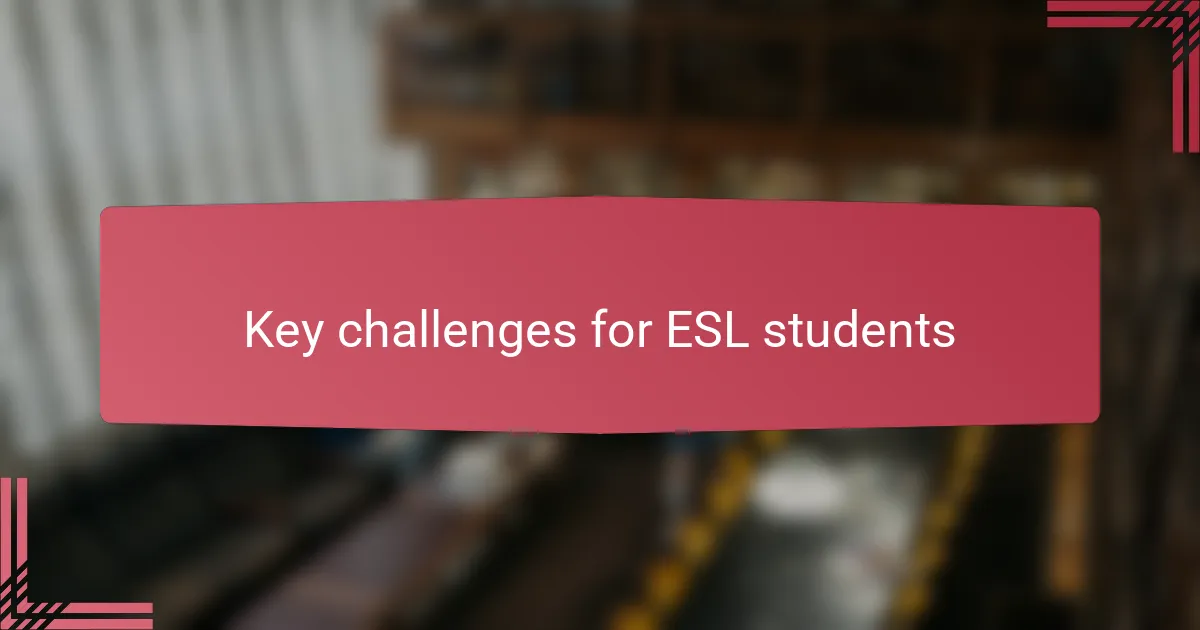
Key challenges for ESL students
ESL students often face the heavy challenge of navigating a new language while trying to express complex thoughts and emotions. I’ve seen how frustrating it can be when words don’t come easily, and students hesitate to speak for fear of making mistakes. Have you ever struggled to find the right words yourself? That barrier creates a silent world that learning alone can’t always penetrate.
Another hurdle is the cultural gap that accompanies language learning. When I first taught ESL, I noticed how some references or jokes completely missed the mark for my students. They weren’t just decoding language; they were decoding an entire way of life. This made me realize how essential it is to adapt lessons with cultural sensitivity, or else students might feel even more isolated.
Finally, there’s the emotional weight ESL learners carry—the anxiety of fitting in, the pressure to succeed quickly, and sometimes even the trauma of leaving home. I remember one student whose eyes lit up only after we connected discussions to their lived experiences. It struck me how much of their learning depends on feeling seen and supported, not just on mastering vocabulary or grammar. How often do we pause to consider the deep personal journey behind each ESL learner’s language goals?
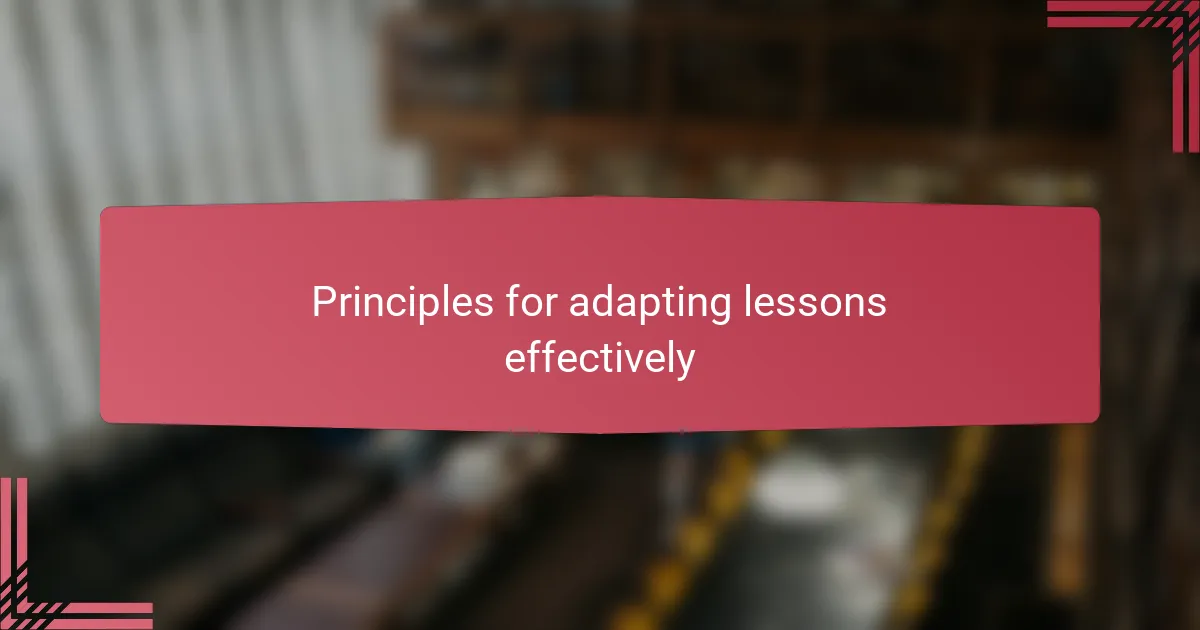
Principles for adapting lessons effectively
Adapting lessons effectively starts with knowing your students deeply—their language levels, backgrounds, and interests. When I first tailored a lesson to suit a beginner ESL student, I saw how simplifying language without dumbing down content made a huge difference. Have you noticed how reducing complexity while keeping meaning intact can boost confidence and participation?
Another principle I hold dear is flexibility. I remember planning a detailed lesson that fell flat because my students needed more time to process new vocabulary. Shifting gears on the spot, I added more visuals and interactive activities, and suddenly, engagement soared. Isn’t it empowering when you adapt in real time and see students respond positively?
Lastly, I always try to create a supportive environment where mistakes are welcomed as steps to learning. When a shy student whispered a hesitant sentence, I didn’t rush correction—I celebrated the effort instead. That small choice changed the dynamic, making the classroom a safe space for risk-taking. How often do we give ourselves permission to nurture confidence before perfection?
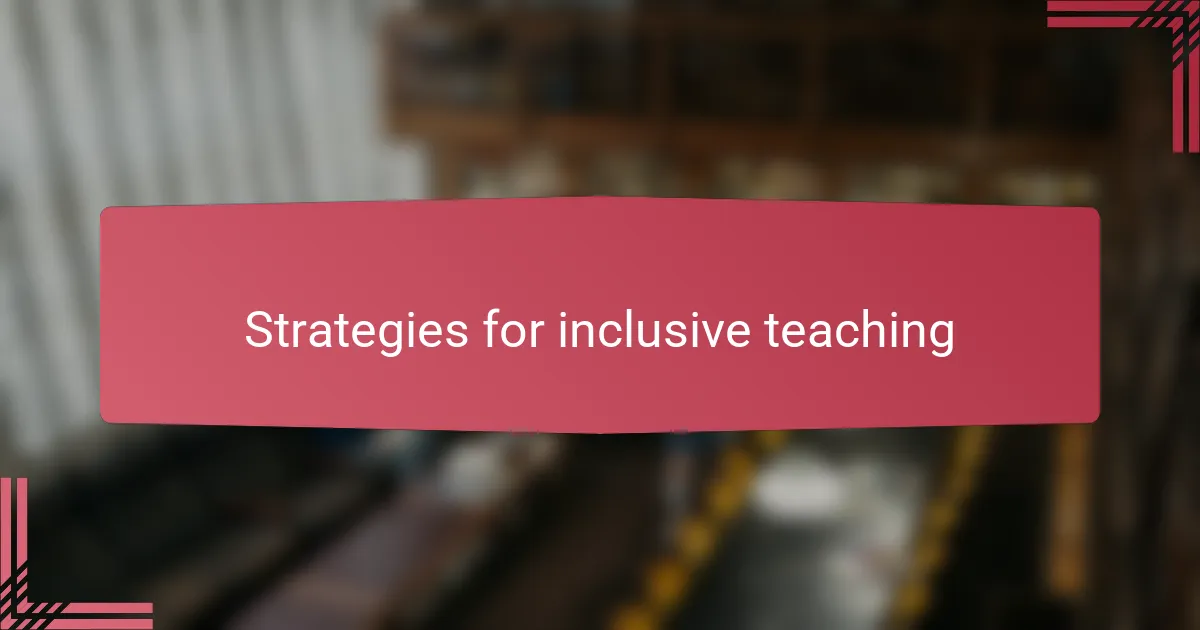
Strategies for inclusive teaching
One strategy that’s been invaluable is the use of multimodal resources—combining visuals, gestures, and clear scaffolding. I recall a lesson where adding simple images alongside new vocabulary unlocked understanding for my ESL students who otherwise seemed lost. Isn’t it amazing how a picture can bridge the gap when words fail?
I also learned to slow down my speech and pause frequently, giving students space to process and respond. Early on, I caught myself rushing through explanations, which left many students overwhelmed. Slowing down felt awkward at first, but it transformed the classroom energy into one where everyone felt invited to participate.
Creating opportunities for peer collaboration has made a world of difference, too. When students work in pairs or small groups, they draw on each other’s strengths and practice language in a low-pressure setting. Have you noticed how much more comfortable learners become when they know they’re not alone in their struggles?
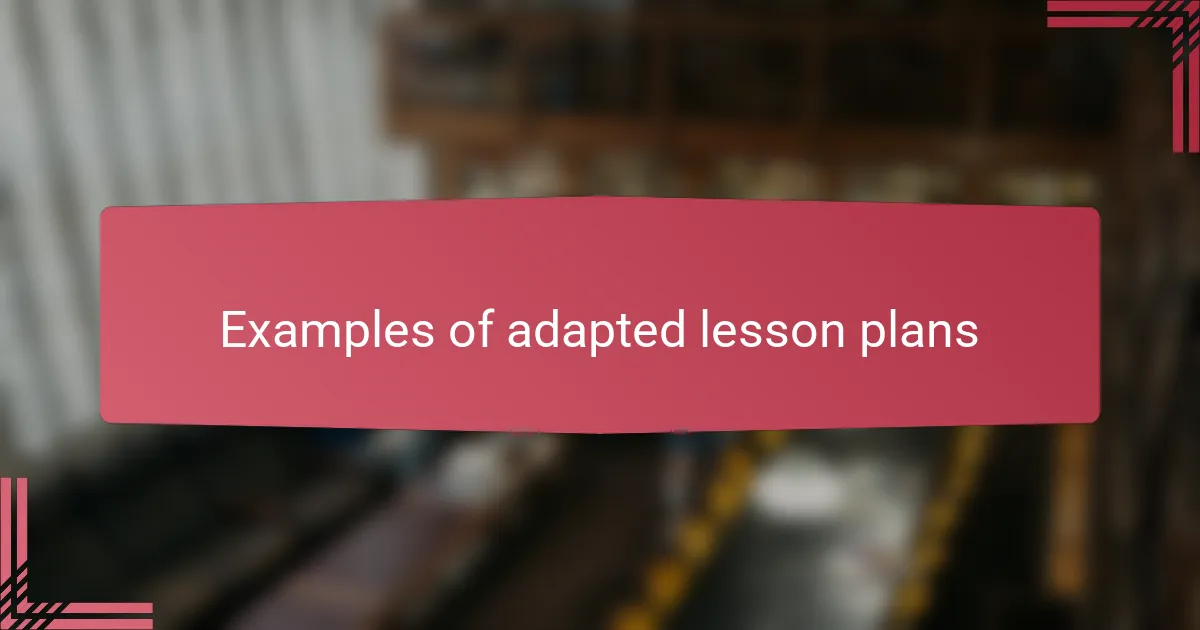
Examples of adapted lesson plans
I once adapted a lesson on community roles by simplifying the text and adding role-play activities. My ESL students surprised me with how confidently they stepped into characters like “doctor” and “teacher,” using just the words they knew. Have you tried turning reading into a performance? It can open doors to both language and self-expression.
For a lesson on environmental issues, I introduced pictures and short videos instead of long articles. The visuals sparked lively discussions that pure text never could, making abstract ideas feel immediate and real. Doesn’t it change everything when students can ‘see’ what they’re learning, not just read about it?
Another plan involved connecting a social justice topic to students’ personal stories, using simple prompts and sentence frames. One shy learner shared about their neighborhood’s park, and suddenly the lesson became alive with real voices. Isn’t it powerful when lessons invite students to bring their own worlds inside the classroom?

Tools and materials used
When choosing tools and materials for ESL lessons, I always lean toward those that are versatile and accessible. Picture cards, simple videos, and interactive apps became staples in my toolkit because they speak a universal language beyond words. Have you noticed how a well-chosen image can instantly clarify meaning and spark curiosity among students still grappling with vocabulary?
I also found that physical materials like puppets or real objects bring a tactile dimension that digital resources often miss. Early in my teaching, handing a toy doctor’s kit to a student helped bridge the gap between new words and real-life experiences, making abstract terms concrete and memorable. Doesn’t holding something related to the lesson make learning feel more immediate and less intimidating?
Lastly, I can’t overstate the value of adjustable worksheets and sentence frames that scaffold language without feeling restrictive. I still remember the relief in a student’s expression when given a simple template to express their ideas on a complex topic—those small supports became stepping stones rather than crutches. How often do we underestimate the power of structure to empower rather than confine?
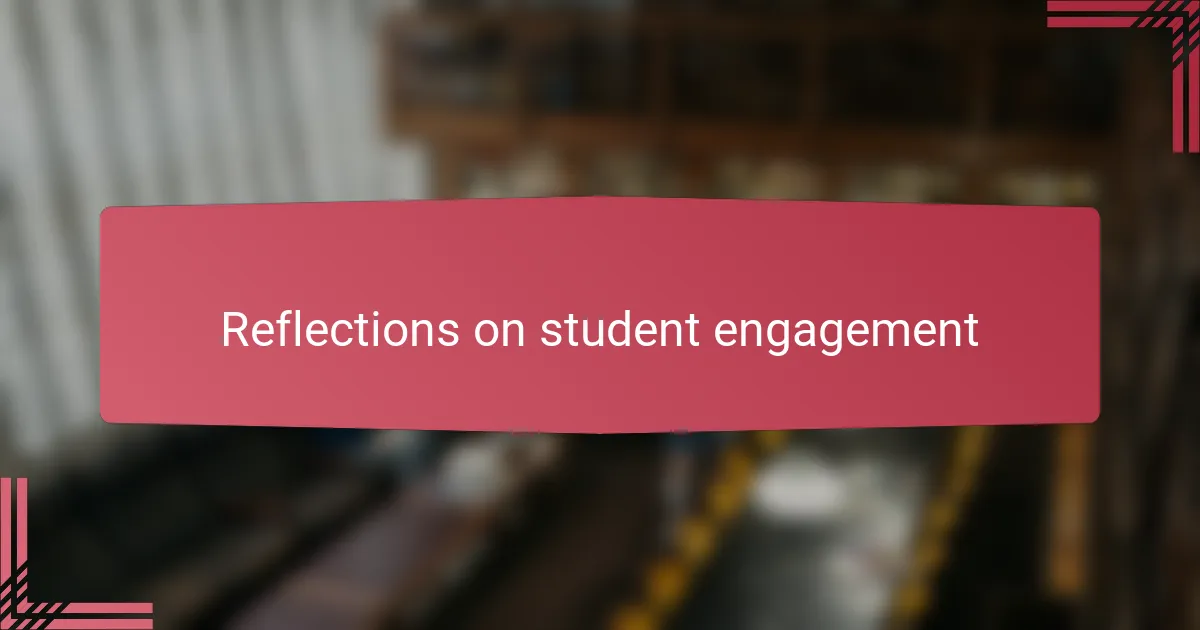
Reflections on student engagement
Engagement took on a whole new meaning for me when I noticed how my ESL students lit up during lessons that connected language learning to their own stories. It wasn’t just about getting words right; it was about feeling heard and relevant. Have you ever seen a student’s eyes brighten the moment they realize their voice matters?
Some days, I’d watch students struggle to stay focused—not because they weren’t interested, but because the content felt distant or too complex. That made me rethink what engagement really means: it’s not just attention, but emotional investment. When students see themselves reflected in the material, their participation shifts from passive to active.
I also found that small gestures—like celebrating a brave attempt to speak or encouraging peers to listen carefully—created a classroom atmosphere where risks felt safer. Isn’t it remarkable how these simple shifts can transform hesitant whispers into confident conversations? For me, engagement blossomed most when trust and respect took center stage.